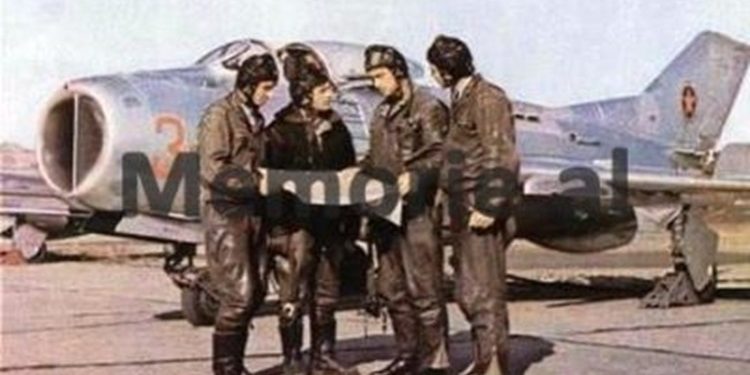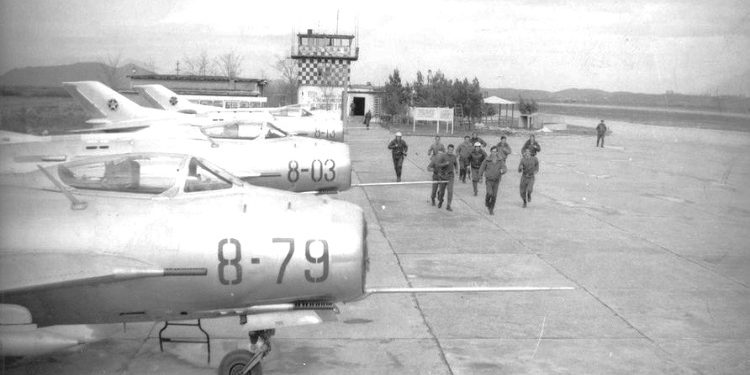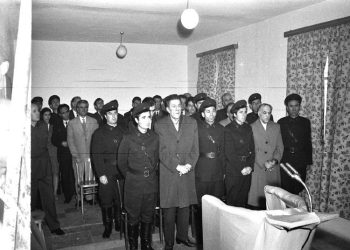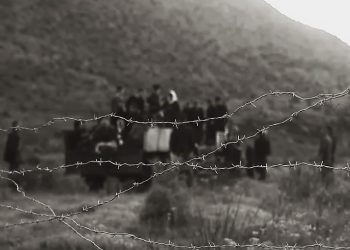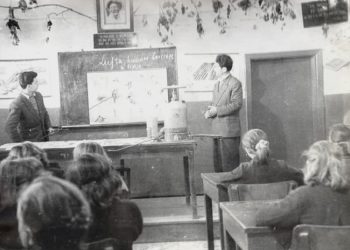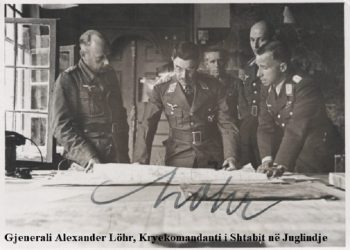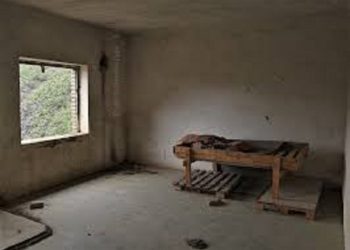By Ylli Molla
Memorie.al / After the breakdown of relations with the Russians, communist Albania began expanding its network of military airfields, seeking new defense options. According to evidence provided by General Rrahman Parllaku, former Deputy Minister of Defense, at the time the idea of redeployment was launched, the main airfields were located near the coastline, which meant that they could be hit simultaneously with missiles from the West. Therefore, the establishment of new airfields, deeper in the country, would give the aviation a greater autonomy of action even for the tasks it could perform across the borders, in a war imposed by its neighbors. Thus, around the 1960s, when combat aviation used only two military airfields, Rinas and Kuçova, with the support of China, the design and construction of new bases began.
Njazi Mani, one of the main cadres for the maintenance and use of airfields, indicates that; After the breakdown of relations with the Soviet Union, a military delegation, headed by former Minister of Defense Beqir Balluku, went to China. After that, the Ministry of Defense decided to open an Aviation School, where young pilots would be trained.
Initially, in 1959, the Pish-Poro airport was built in Vlora. In those years, the trainees flew training aircraft in Kuçova, where the Combat Aviation School was first opened, then they moved on to practice with combat aircraft in Vlora.
“But when I returned from the Soviet Union and saw the Pish-Poro field, I didn’t like it, compared to the military airfields of the Soviet Union,” Mani recalls. During the conclusions, at the end of the inspection, he criticized the condition of the base, telling the leaders that the regiment should leave this airfield. In this difficult situation, when aid from the Soviet Union was completely blocked, the Defense Council set the task of looking into the possibility of building new airports.
For this, a working group of 4 people was created, including: Niko Hoxha, commander of the aviation regiment, Lavdosh Dulaj, engineer and engineer specialist, Njazi Mani, specialist in the construction of airfields and pilot Peço Polena. The clear task of the Minister of Defense, Beqir Balluku, was: “We want airfields in the South and North of the country”.
“First we went to Gjadra,” continues Mani, “we scouted the place, there was terrain suitable for protection from weapons of mass destruction. Meanwhile, in Shkodra there had been an airfield since the time of Zog. We saw it, but, in my opinion, it had limited parameters, landing could only be done from one direction”. – “We want to go further north, to strike deep into Yugoslavia,” said the leaders of the Ministry of Defense.
The team went to Puka, but did not find a suitable place there. – “In Mirdita, we found a good place, about 1,100 meters above sea level. But there, due to the thin air, the possibilities of stopping the planes were reduced, and, very close to Kurbnesh, there was an abyss, which complicated the problem,” says the specialist.
The searches continued in Tropoja, Kukës and Peshkopi, but without any results. The work on the design of the aerodromes, according to Mani, after these searches was moved to the South. In Cërrik, a good place was found with a length of 3000 meters and a width of more than 100 meters. There was also space for the expansion of the technique. But it was far from the border with the southern neighbor.
“The planes that could be based there could go to perform tasks with a take-off to Follorina, not further”, – adds Mani. The expedition went to Korça, where the old aerodrome was, about 800 meters, but short, for the requirements of combat aviation.
Meanwhile, in Lumalas of this district, a good place was found, with the necessary dimensions: 3 thousand by 100 meters. In Gjirokastra there was an old airfield, from the reign of Zog, which could be expanded by 300 meters, but in any case, it could not be adapted for all types. Whereas in Vlora, there were two airfields, one in Ujë e Ftohtë and the other in Nartë, the latter turned out to be more suitable.
“We wanted one in Kavajë, but the place we found near Shkëmbi i Kavajës, had limited dimensions and damaged a lot of farmlands, about 40 hectares”, – adds Mani. After this long inspection, a report was compiled for the leadership and then the order was issued to build the airfields of Cërrik, Lumalasi and Gjadri. The latter was built according to international standards for military airports and in accordance with the modern technology of the time.
A fantastic shelter, where about 40 aircraft could be secured from enemy air strikes. While Lumalasi and Cerrik were built as field aerodromes. At both of these airports, the Kuçova regiment has been stationed several times for training. In later years, after the breakdown of relations with China, the government did not have funds to continue building and modernizing the aerodromes. Memorie.al






